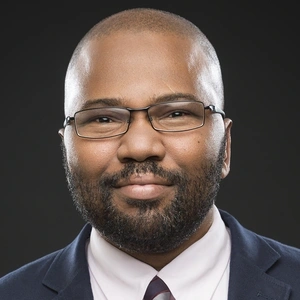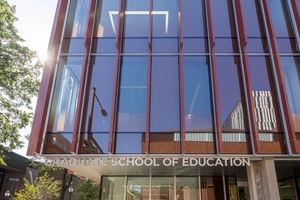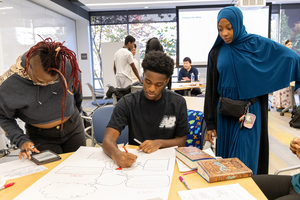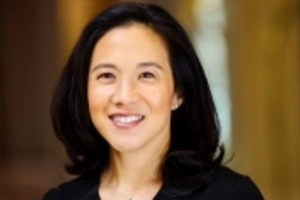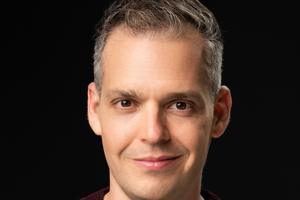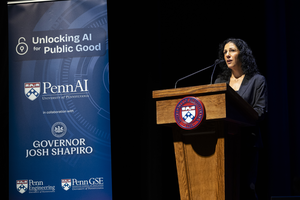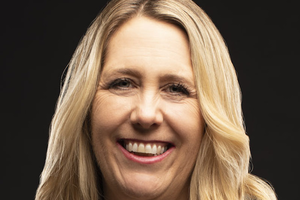Faculty Expert
Ed Brockenbrough’s first book, Black Men Teaching in Urban Schools: Reassessing Black Masculinity (Routledge, 2018), built on his long career in urban teacher preparation, provided insights into what it means to be a Black, male teacher. His latest, Learning While Black and Queer: Understanding the Educational Experiences of Black LGBTQ+ Youth (Harvard Education Press, 2024), switches its focus from educators to students, outlining common obstacles to educational equity for Black, LGBTQ+ youth and suggesting research-backed guidance for their teachers to help foster their success.
But making the classroom perspective switch wasn’t as dramatic for the associate professor as you might think. Guided by his personal connections to the work, Brockenbrough knew the crucial role he could play as a researcher with a similar background to his subjects.
“When I was working with Black, male teachers, they were very responsive to me because I was asking them questions that nobody else was asking and I had insight into both the opportunities and challenges of being a Black man in the classroom,” said Brockenbrough, who is, himself, an openly queer, Black educator. “Similarly with queer youth of color, seeing how they responded to me underscored that I was uniquely positioned to serve their needs. . . . They saw me as a role model, as something to aspire to. And so again, I realized that I was uniquely positioned to tell their story in a way that was authentic and sensitive and compassionate, and informed by some insider knowledge.”
Brockenbrough was inspired to shift the focus of his research while volunteering at a community-based HIV/AIDS service organization for queer youth of color. He realized over time that the center—which he calls Midtown AIDS Center, or MAC, in his book—was more than a healthcare location. It served as a culturally responsive educational space, galvanizing him to imagine lessons that schools could take from MAC to do a better job of supporting their own queer, Black students.
“Young people were getting tutored by staff for their GED exams there. They were getting help finding housing. They were getting help with job interviews. It was just such a dynamic space,” said Brockenbrough of MAC. “The immediacy of my volunteering experience [showed me] there was a role that I could play in the lives of queer youth of color that other scholars just weren't stepping up to.”
Learning While Black and Queer takes culturally responsive pedagogy a step further, asking educators to acknowledge queerness as part of their students’ cultural background and lived experience, becoming what Brockenbrough calls “queerly responsive pedagogy.” It is a framework of four commitments—critical care, intersectional analysis and affirmation, internal inclusivity, and advocacy—that aims to prepare teachers to serve their Black LGBTQ+ students and to help them counter anti-queerness and other forms of oppression.
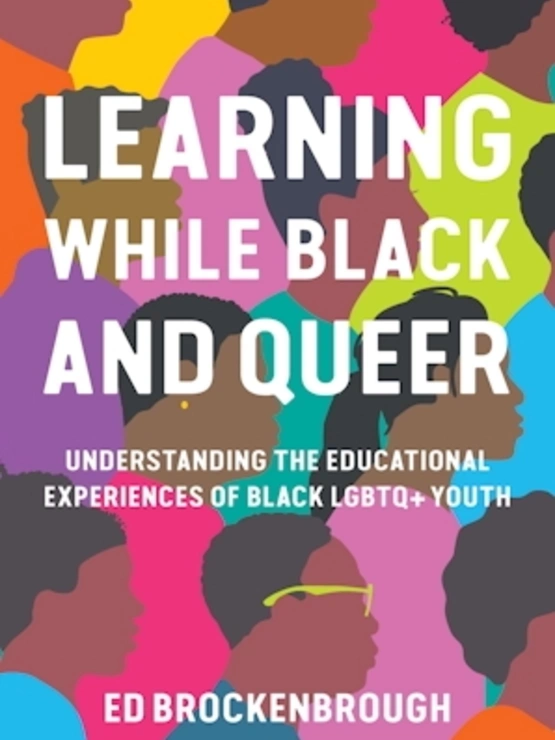
“Queer and trans students who are Black are going to show up in class in ways that are different from their cisgender and heterosexual peers,” said Brockenbrough. “I didn't see anyone really addressing the presence of queer students in the literature and practices around culturally responsive pedagogy. And the volunteering that I did at MAC gave me a front row seat to culturally responsive work with Black, queer youth. I thought, ‘Oh, ding, ding, ding! It's actually doable! Here's an actual example of it. People need to see this and think about how to take this up in schools.’”
Additionally, Brockenbrough advocates for the adoption of a queer-inclusive curriculum that covers health and sexuality and for access to peer and intergenerational networks for Black, queer students. Throughout the book, he offers evidence-based recommendations for creating educational spaces and school cultures that promote belonging.
“The biggest hope I have is that readers will find at least one strategy for adjusting their practices in ways that serve the needs of Black, queer youth [and that] researchers find something that might inform how they include and explore the experiences of Black, queer youth more authentically,” he said. “If one nugget in any of the chapters speaks to you, I hope you run with it. I guess another way to say that is that I hope the book helps readers to do something that will improve the lives of Black, queer youth.”
Media Inquiries
Penn GSE Communications is here to help reporters connect with the education experts they need.
